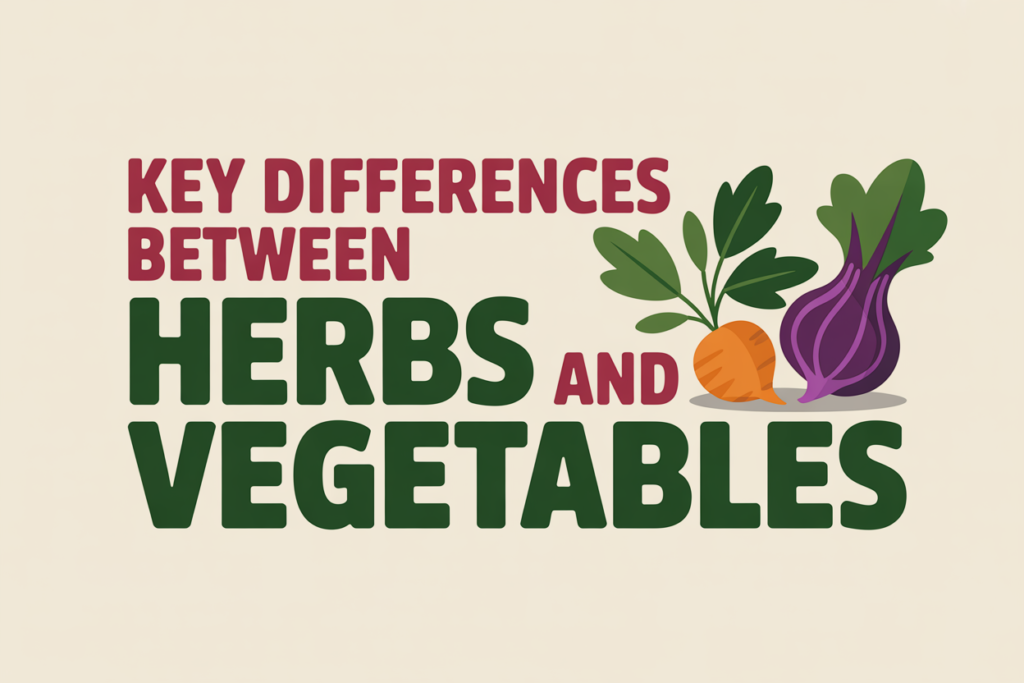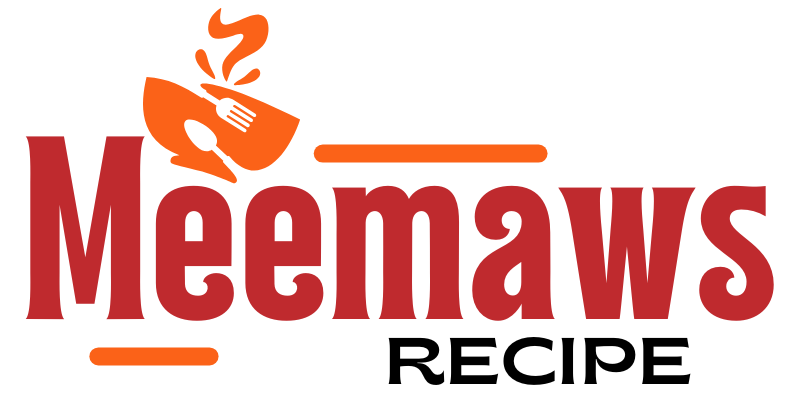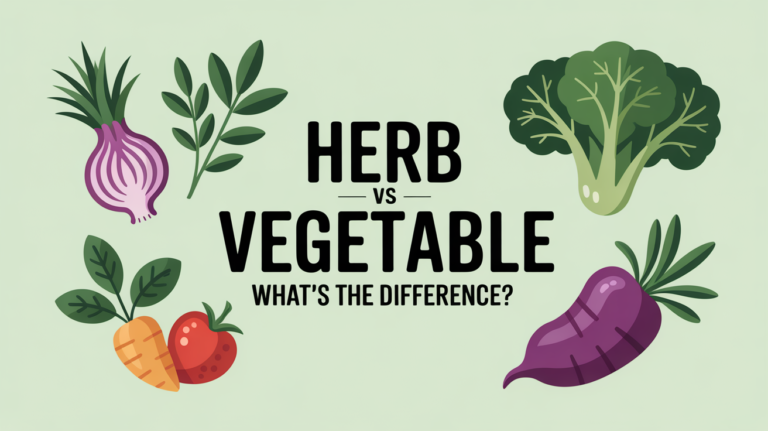Herbs are usually the leafy, flavor-packed parts of plants used in small amounts, while vegetables are edible plant parts—like roots, stems, or leaves—eaten in larger portions for nutrition.
Have you ever stood in your kitchen or garden and wondered, “Is this basil a herb or a vegetable?” You’re not alone. The line between herbs and vegetables can get blurry—especially when both come from plants and sometimes even from the same plant! Whether you’re cooking, gardening, or just curious, knowing the difference helps you use them better. In this article, we’ll break down the distinctions in the simplest way possible—complete with examples, a comparison table, and clear answers to your common questions. Let’s walk through it all together.
Herb vs. Vegetable Identifier
What Is a Herb?
A herb is the leafy green part of a plant that’s used for flavor, fragrance, or sometimes medicine. Herbs are often added in small amounts to dishes to boost taste without overpowering the meal. Think of basil, oregano, or parsley—you use a little, but it makes a big difference.
Most herbs come from soft, non-woody plants that grow quickly and are easy to grow in small spaces. You’ll often find them used fresh or dried. Herbs also have many uses beyond cooking. For example, peppermint helps with digestion, and lavender is used in aromatherapy. According to Medical News Today, many herbs also have antioxidant or anti-inflammatory benefits.
Some herbs, like cilantro, come from plants where other parts (like seeds) have a different name. In cilantro’s case, the leaves are the herb, and the seeds are coriander.
In short, herbs are flavor-boosters, often leafy and green, used in small doses.
What Is a Vegetable?
A vegetable is any edible part of a plant that we eat in larger portions—mainly for nutrition and bulk in meals. Vegetables can be roots (like carrots), stems (like celery), leaves (like spinach), flowers (like broccoli), or even seeds (like peas).
Unlike herbs, vegetables are often eaten as a main part of a meal. For example, a salad can be made entirely of vegetables like lettuce, tomato, and cucumber. They are high in fiber, vitamins, and minerals, and essential for a healthy diet. The CDC recommends including vegetables in every meal for better long-term health.
Some vegetables, like onions, have strong flavors but are still used in larger amounts, setting them apart from herbs. Even the leaves of some plants, such as kale or cabbage, are classified as vegetables due to how they are used and how much we consume.
Key Differences Between Herbs and Vegetables

Let’s make the comparison simple. Here’s a quick look at how herbs and vegetables differ across several factors:
| Feature | Herbs | Vegetables |
|---|---|---|
| Plant Part Used | Usually leaves | Leaves, stems, roots, flowers, or seeds |
| Purpose | For flavor, aroma, or health | For bulk, nutrition, and fullness |
| Amount Used | Small amounts | Larger portions |
| Texture | Usually soft and leafy | Varies—can be crunchy, firm, or leafy |
| Examples | Basil, mint, rosemary | Carrot, lettuce, broccoli, potato |
| Culinary Role | Adds flavor and aroma | Forms the main part of a dish |
| Medicinal Use | Often used in natural remedies | Less often used for healing |
Understanding these differences helps you choose the right plant for cooking, gardening, or even healing. Up next, we’ll explore common FAQs that often confuse people—like whether cilantro is both an herb and a vegetable.
Comparison Table: Herb vs. Vegetable
Looking at herbs and vegetables side by side can make the differences easier to spot. This table breaks down the main traits that set them apart.
| Aspect | Herb | Vegetable |
|---|---|---|
| Used Part | Mostly leaves | Any edible plant part |
| Use in Cooking | Adds flavor or aroma | Eaten in large portions |
| Amount Used | Small (like a few leaves) | Large (like a whole carrot or bowl of greens) |
| Taste Role | Supports flavor | Main taste or texture in meals |
| Medicinal Use | Common in natural healing | Less common for health treatments |
| Shelf Life | Short (especially fresh herbs) | Varies—some can last longer (like potatoes) |
| Examples | Basil, thyme, cilantro | Spinach, beetroot, cauliflower |
Both have their own role in the kitchen and garden. Learning how to use each can improve your meals and health habits. If you’re growing plants at home, understanding the difference helps you give each type the care it needs. You can also check this gardening guide by the University of Illinois for more on herbs.
Common Questions Answered (FAQs)
Is coriander a herb or a vegetable?
Coriander leaves are used as a herb. The seeds, also from the same plant, are used as spices. In some places, like Asia, both are used in cooking. You’ll find coriander on many spice lists for its digestive and healing properties.
Can a plant be both a herb and a vegetable?
Yes, it can. Take fennel—its leaves are used as herbs, and the bulb is eaten as a vegetable. The part of the plant and how it’s used in cooking determine the label.
Are all leafy greens herbs?
No. Spinach, kale, and lettuce are vegetables, even though they are leafy. They’re eaten in larger portions for nutrition, not just flavor.
Why are herbs used in small amounts?
Herbs have strong flavors or scents. That’s why you only need a pinch or a few leaves. Adding too much can overwhelm a dish.
Do herbs have more health benefits than vegetables?
Herbs like turmeric, ginger, and oregano are rich in antioxidants. They’ve been used in natural medicine for centuries. But vegetables have a broader range of nutrients and offer more bulk in meals. Both are healthy in different ways. You can learn more from this National Center for Complementary and Integrative Health article.
How to Use Both in the Kitchen and Garden
Herbs for Flavor: Culinary Uses
Herbs bring dishes to life. A sprinkle of basil on pasta, mint in tea, or rosemary on roasted meat makes food more enjoyable. You can use fresh or dried herbs. Fresh herbs add brightness. Dried ones are stronger and work well in slow-cooked meals. Check out this Herb Cooking Chart from the USDA for guidance on pairings.
Vegetables for Nutrition: Meal Ideas
Vegetables are the base of healthy meals. Try a stir-fry with broccoli and carrots, a salad with cucumber and bell peppers, or roasted zucchini and sweet potatoes. They’re full of fiber, vitamins, and minerals, which help keep your body strong and energized.
Companion Planting Tips for Gardeners
Growing herbs and vegetables together can help your garden thrive. Some herbs repel pests or attract helpful bugs. For example, basil planted near tomatoes boosts flavor and protects from pests. Marigolds, often called herbs for their scent, help keep away harmful insects. Learn more from this companion planting guide by the Old Farmer’s Almanac.
Using herbs and vegetables the right way—whether in meals or in your garden—makes a big difference. Knowing their roles lets you eat better, cook smarter, and grow more.
Conclusion
It’s easy to mix up herbs and vegetables, but once you understand their purpose, use, and benefits, the differences become clear. Herbs are usually the leafy, fragrant parts of a plant used in small amounts to add flavor or aroma. Vegetables are the main edible parts of a plant—roots, stems, leaves, flowers, or seeds—eaten in larger amounts for nutrition and fullness.
Both are key to a healthy diet and can be used in smart ways. For cooking, herbs turn simple meals into something special. Vegetables, on the other hand, give your body the fuel and fiber it needs. In gardening, knowing how each grows helps you plan your space better and even protect your plants. If you want to dive deeper into plant-based diets, this Harvard guide to vegetables and healthy eating is a great place to start.
Now that you know the difference, you’re ready to make better food choices, grow smarter in your garden, and even boost your kitchen skills. Whether it’s adding a sprig of thyme or roasting root veggies, you’re now equipped to use both the right way.
Herb or Vegetable?
Is basil a herb or a vegetable?

